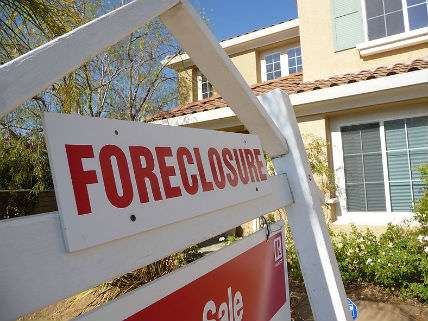Insanity Defined: Feds Unveil Plan to Help High-Risk Homebuyers Take On Massive Debt. Again.

"Low Down Payments Are Coming Back," screams a headline from The Wall Street Journal today. The story details two steps federal regulators apparently have in the works:
On Monday, Federal Housing Finance Agency Director Mel Watt announced that mortgage-finance companies Fannie Mae and Freddie Mac would start backing loans with down payments as low as 3%.
And on Tuesday, three federal agencies approved a loosened set of mortgage-lending rules, removing a requirement for a 20% down payment for a class of high-quality loan known as a "qualified residential mortgage."
Loans with little to no down payment were a common feature of the lax lending practices that were prevalent during the housing market's bubble years.
Of course, those bubble years eventually came to an end, causing an economic meltdown of jawdropping magnitude. Presidents George W. Bush and Barack Obama responded by running up the national debt from $10 trillion before the recession to more than $17.5 trillion today. And "experts" everywhere laid the blame at Wall Street's feet, lambasting the banks for making reckless loans they should have known were destined to go bad.
Now, in the wake of that historic lending-bonanza-turned-financial-crisis, federal regulators are concerned—but not that we might still be incentivizing people to take on more debt than they can realistically service. No, federal regulators' concern is that the banking system isn't making it easy enough for people to take out expensive mortgages.
Luckily, they have a plan to help thousands of additional high-risk borrowers purchase homes they can't afford. Sound familiar?




Show Comments (53)